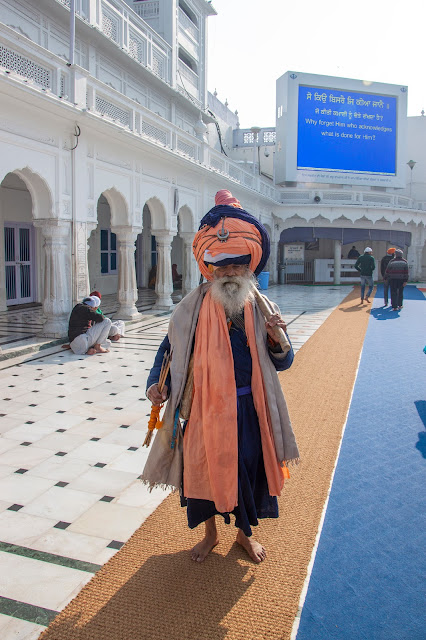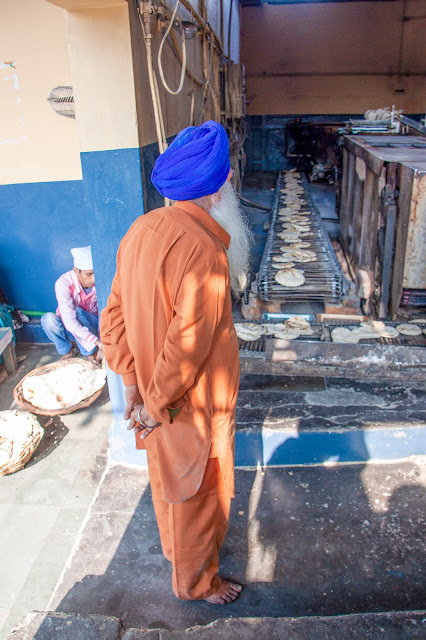Next on the agenda was the Golden Temple (Temple of God), the pre-eminent site in Sikhism; being not only a central religious place but also a symbol of human brotherhood and equality. Everybody, irrespective of cast, creed or race can seek spiritual solace and religious fulfilment without any hindrance. It also represents the distinct identity, glory and heritage of the Sikhs.
Before we could enter the complex, as well as the ladies covering their heads, the males had to don headscarves too. The lovely Ron, AKA Mr Been Everywhere (Mr & Mrs Wolf in the background).
Before you get to the main, inner bit, you have to take your shoes off (as usual in temples) but also walk through a trough to clean your feet - it reminded me of going to the swimming baths. Emerging from the surprisingly cold water, this was my first view of the place - beautiful!
Guru Nanak, the first guru of the Sikh people started the tradition in 1481 and since then the Golden Temple has been serving free hot meals, also known as langar, to people of all religions and faiths who come to its doors every day. Free langars are served at all Sikh gurudwaras worldwide, but this one is special, simply because of the vast numbers of meals prepared day in, day out – averaging 50,000 people a day and up to 100,000 on holidays/religious occasions.
Meals in the langar are vegetarian and are simple, nourishing and nutritious. They usually consist of rotis (bread), rice, daal (lentils), a vegetable dish, and kheer (dessert).
Serving these many people day after day is no easy task, but the clockwork efficiency of the sewadars (workers) makes the task simple. Usually, 90% of the working staff is made up of volunteers who, along with the 300 permanent sewadars, ensure the food is cooked and delivered on time. There are two kitchens in which the food is prepared, 11 hot plates, several burners, machines for sieving and kneading dough, and various other utensils. On normal days all the dishes are hand made by the sewadars. I didn’t see where the curries etc were being made but I can imagine how big they are as the vats can hold as much as 7,000 kilos of daal.
The quantity of fresh ingredients needed is huge; most of the raw materials come in from Delhi, or are bought locally. The kitchen receives a lot of donations too, either in cash or kind. I think I’d have a bit of a “face" on me if I had to peel so many garlic cloves.
Hygiene is of utmost importance, both before and after meals. Dirty plates are handed over to another set of volunteers and each plate is washed 5 times before being used again.





















